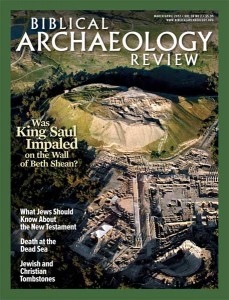For archaeologists, destruction can be a very good thing. It captures a unique snapshot of the life and material culture of an archaeological site at a particular moment in time. In the conclusion of the recently published third volume of the Ashkelon excavation reports,1 codirectors Daniel M. Master and Lawrence E. Stager reflect on the benefit of Ashkelon’s violent destruction at the end of the seventh century B.C.

When we imagine Ashkelon “on the eve of destruction” in 604 B.C., we think of a vibrant city about to be incinerated and the sudden cessation of 600 years of Philistine history. But it is good to remember that this very destruction has preserved for us a panorama of the wider ancient world. For decades before its demise, Ashkelon had successfully navigated the worlds of Phoenician trade, Assyrian conquest, and Egyptian imperial ambition. The sudden event of its destruction [by the Babylonian ruler Nebuchadnezzar, or Nebuchadrezzar, before he turned to Jerusalem] is overwhelming in the archaeological record, but on closer inspection we see that the ruins illuminate broader historical trends that go far beyond the moment of their creation.
Already a library member? Log in here.
Institution user? Log in with your IP address.

